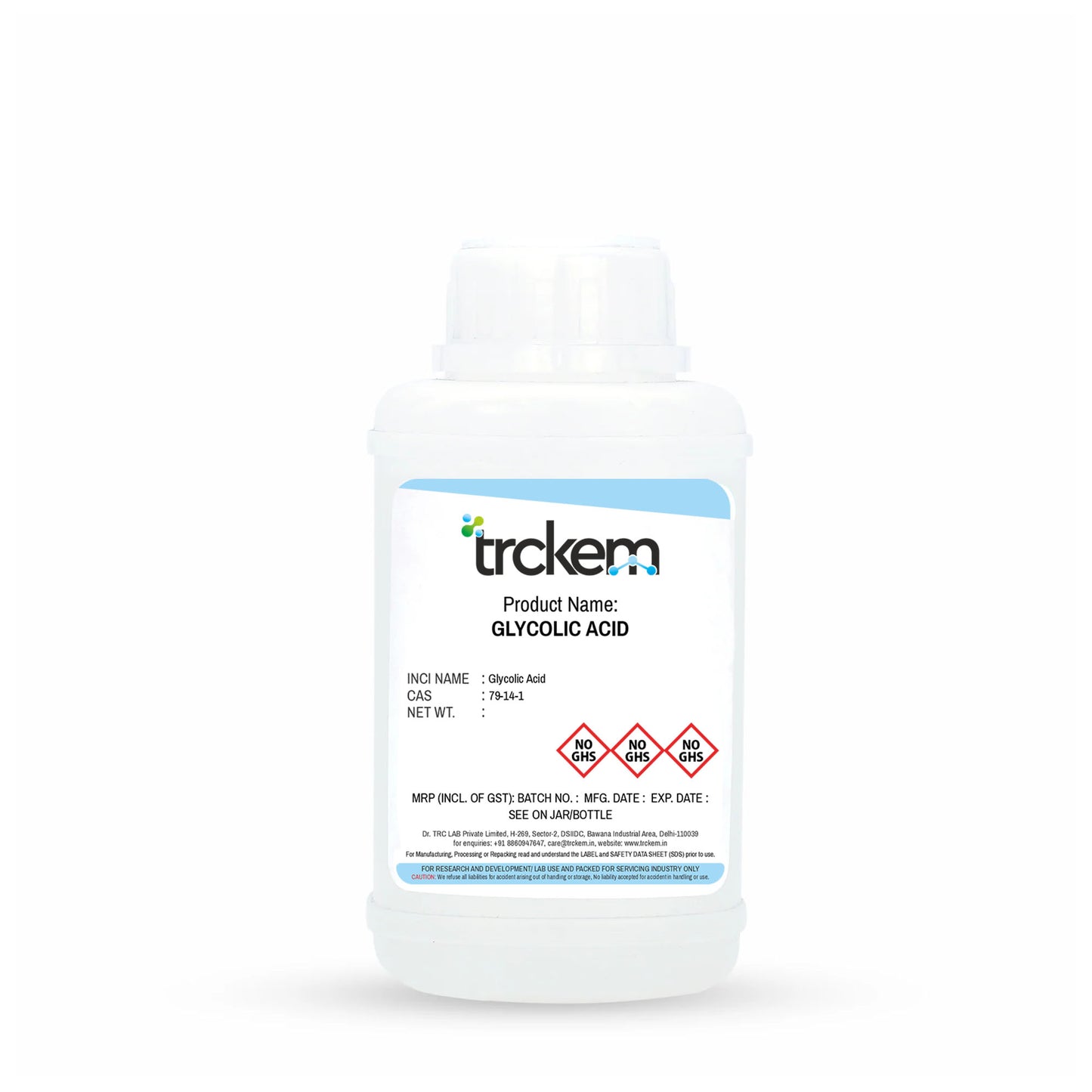

THE STORY OF GLYCOLIC ACID

Glycolic Acid: The Gold-Standard AHA for Smooth, Renewed Skin
Glycolic Acid is the most effective and widely used Alpha Hydroxy Acid (AHA) in skincare. Known for its small molecular size, it penetrates deeply to exfoliate, brighten, smooth, and rejuvenate the skin.
It is a hero ingredient in peels, exfoliating serums, anti-aging products, and skin-brightening treatments.

High-Purity AHA Synthesized for Superior Dermal Penetration
Cosmetic-grade Glycolic Acid is produced through:
• Fermentation and oxidation of sugar cane-derived molecules, or
• Reaction of monochloroacetic acid with sodium hydroxide
The result is a high-purity, cosmetically safe AHA with exceptional skin penetration.
TRCkem supplies Glycolic Acid in both powder and 70% aqueous solution.

Exfoliate. Brighten. Renew.
Glycolic Acid delivers multiple high-performance benefits:
✅ Removes dead skin cells for smoother texture
✅ Reduces dark spots, pigmentation & dullness
✅ Boosts collagen production for firmer skin
✅ Clears clogged pores & prevents breakouts
✅ Enhances absorption of other active ingredients
Used in: chemical peels, exfoliating cleansers, brightening serums, anti-aging creams, body lotions, and foot-care formulas.

Potent AHA — Use with Controlled pH & Careful Dosing
• Typical use level:
– 2–10% for daily skincare
– 10–20% for controlled home-use peels
– 20–70% for professional/dermatology peels
• Final formula pH should be 3.5 or above for leave-on products
• Add to water phase and adjust pH with neutralizers
• Avoid combining with strong retinoids or harsh actives
• May cause irritation—patch test required
• Store tightly sealed away from heat and light
Formulator’s Queries, We Answered
1. What is Glycolic Acid?
Glycolic Acid is a type of alpha hydroxy acid (AHA) derived from sugarcane. It is widely used in personal care and cosmetic formulations for its exfoliating, skin-renewing, and brightening properties. Due to its small molecular size, it penetrates the skin effectively to stimulate cellular turnover.
2. What is the INCI name and CAS number of Glycolic Acid?
CAS Number: 79-14-1
INCI Name: Glycolic Acid
3. What are the key benefits of using Glycolic Acid in skincare products?
Gently exfoliates dead skin cells
Promotes smoother, brighter, and more even-toned skin
Helps reduce fine lines, dark spots, and acne scars
Improves skin hydration by increasing hyaluronic acid levels in the skin
Enhances absorption of other active ingredients
4. What types of personal care products commonly contain Glycolic Acid?
Glycolic Acid is found in a variety of products, including:
Facial exfoliators and peels
Anti-aging serums and creams
Acne treatment products
Toners and cleansing pads
Body lotions and foot creams
5. What concentration of Glycolic Acid is typically used in formulations?
Home-use products: 1% to 10%
Professional or clinical peels: 20% to 70% (regulated use)
Always follow regulatory guidelines and usage recommendations for safety and efficacy.
6. Is Glycolic Acid safe for all skin types?
Glycolic Acid is generally safe for normal, oily, and combination skin. However, sensitive or dry skin types may experience irritation, especially at higher concentrations. A patch test is recommended before full use.
7. Is Glycolic Acid considered a natural or synthetic ingredient?
While Glycolic Acid can be naturally derived from sugarcane, it is often synthesized for consistency and purity in cosmetic formulations. It is accepted in many clean and performance-based skincare products.
8. Are there any usage precautions for products containing Glycolic Acid?
Yes. Glycolic Acid increases sun sensitivity. It is recommended to:
Use sunscreen during the day
Avoid using with other strong acids or retinoids unless formulated specifically
Start with lower concentrations and increase gradually



